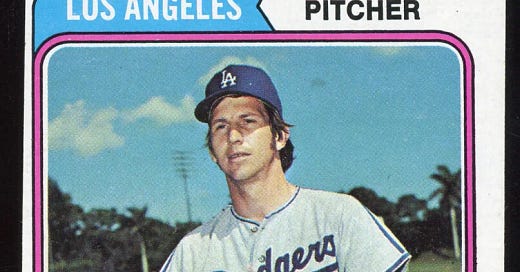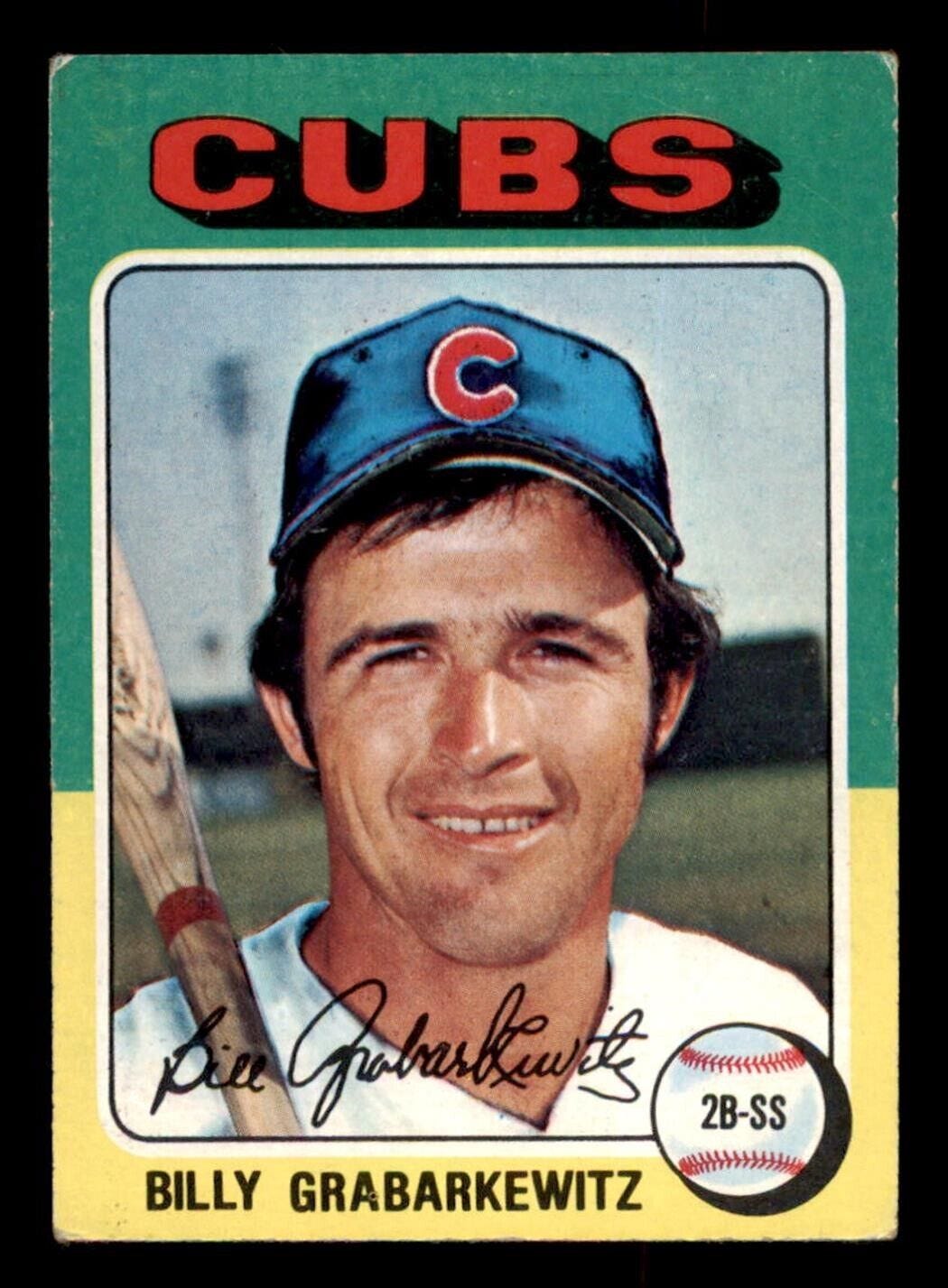It took a little while, but today is the first Hall of Famer that I’ll be discussing here. The players who get to sign baseballs with “HOF” and the year of their induction have reached the highest peak of achievement in the game. And Don Sutton surely fits this bill, having played for 23 seasons in the majors. He won 324 games, which is probably more than any pitcher will ever win again, with the game having evolved the way that it has.
The Los Angeles Dodgers, as of 1974 when this card appeared, hadn’t yet reached the heights they would later attain. Their still-amazingly durable infield had only just begun playing together, and some of their other pieces (Reggie Smith in St. Louis, Dusty Baker in Atlanta, Burt Hooton in Chicago) hadn’t arrived in LA quite yet.
In time—after the Oakland A’s had broken apart and Cincinnati’s Big Red Machine did the same—the Dodgers in the National League, and the New York Yankees in the American League, spent two seasons on top of their respective leagues. And Don Sutton was a big part of the Dodgers’ rise to the top.
For all of the Dodgers’ MVP, All-Star, Gold Glove and team record-setting, including an MLB single-season attendance record in 1978, the only player from those teams to be enshrined in Cooperstown is Don Sutton. And, to top it all off, he took a swing at Steve Garvey in August of 1978. That’s enough to make him a baseball hero, at least in my book.
After retiring from the game in 1988, at the age of 43, Sutton went on to have a long broadcasting career with the Atlanta Braves and the Washington Nationals. He was inducted into the Baseball Hall of Fame in 1998, his number 20 was retired by the Dodgers, and he was also inducted into the Atlanta Braves Hall of Fame in 2015. Don Sutton passed away three years ago today, at the age of 75.
This might seem hard to believe, but there was a brief moment in time when Don Sutton’s baseball career was eclipsed by that of his teammate, Billy Grabarkewitz. Since he now goes by “Billy G” I think I’ll do the same thing here. And of the more than 600 players in my collection of 1970s baseball cards, nobody has a longer last name. Only one can even match his 12-letter moniker, and I’ll tell you who that is when his time comes around.
Billy G played in the Cape Cod Baseball League out of high school, back in 1963. To this day, the league remains a vibrant part of summertime on Cape Cod, and an important pipeline for major league talent. My hope is that anyone reading this has, or someday will, discover what makes this league so special.
Billy G was on course to make his debut in the major leagues in 1968, but a collision at home plate in a Texas League game put his playing future into doubt. He came back from these injuries, though, and made his debut with the Dodgers in 1969. But the following year, 1970, took Billy G to the apex of his playing career.
By starting off that year on a torrid hitting pace (where he was batting over .400 in late May), the Dodgers organization made a push to have Grabarkewitz make the All-Star Game as a write-in candidate (to which Billy G quipped “They can’t even pronounce my name. How could they spell it?” He did have a point there.) He came up short in this regard, but was named to the team as a reserve by National League Manager Gil Hodges.
Billy G played a significant role in the outcome of that game, and its most iconic moment. The game went into the 12th inning, and Pete Rose singled with two outs. Billy G then singled Rose over to second base, and he came in to score on another single by the Cubs’ Jim Hickman. Without Billy G’s single the game-winning run—and the memorable way it unfolded—wouldn’t have occurred.
There was really no place for Billy G to go from this lofty perch but down, and he ended the 1970 season hitting a respectable .289. But it was also the high-water mark of his playing career. He spent two more seasons with the Dodgers, and made it to the 1975 season, as depicted on the card above. He played just six games in the majors that season before getting hurt, and ended his playing career at the age of 29. But for a player whose career seemed to be in doubt before he ever made it to the majors, Billy G did all right in the end.
And I need to say something about the airbrushing on his Cubs cap above. Billy G was acquired by the Cubs late in the 1974 season, but the Topps company apparently did not have any pictures of him wearing Cubs regalia. So they airbrushed in some blue, and added the most awkward-looking C that I’ve seen on any card.
The Topps-created red C really pops against the team name at the top of the card, while the blue clashes hard against the Oakland A’s-inspired color scheme of the top and bottom borders. I’ve always thought of the 1975 Topps set as the shag carpeting of baseball cards. And, as a complete aside, the Cubs cut Billy G in spring training that year, and he never played for them again.
Don Sutton was Billy G’s teammate for four seasons in Los Angeles, and for one teammate to pass away on another’s birthday seems strangely ironic, in some way. And yet Billy G is still going strong at age 77, and I wish him the best today.
Until tomorrow…






The shag carpeting of baseball cards - reading it was worth it for that turn of phrase alone. I’d love to read some thoughts on the Sutton/Garvey disputes (my understanding is that they hated each other). Looking back now, I’d say Sutton was on to something.